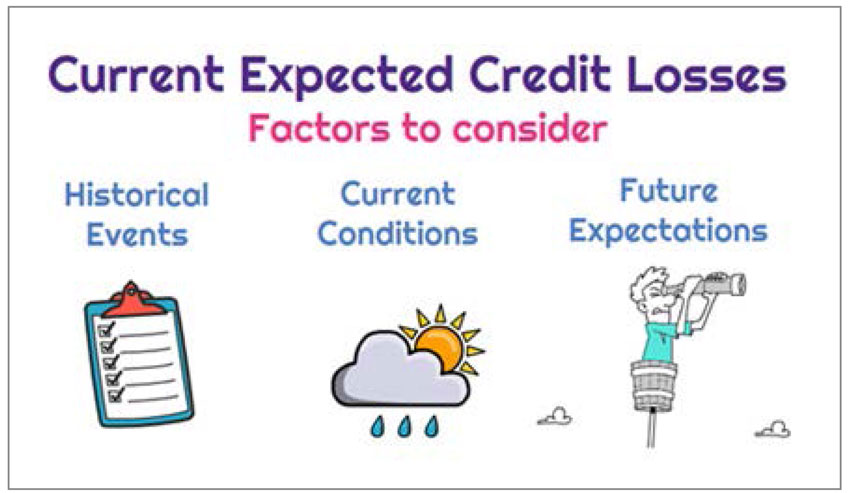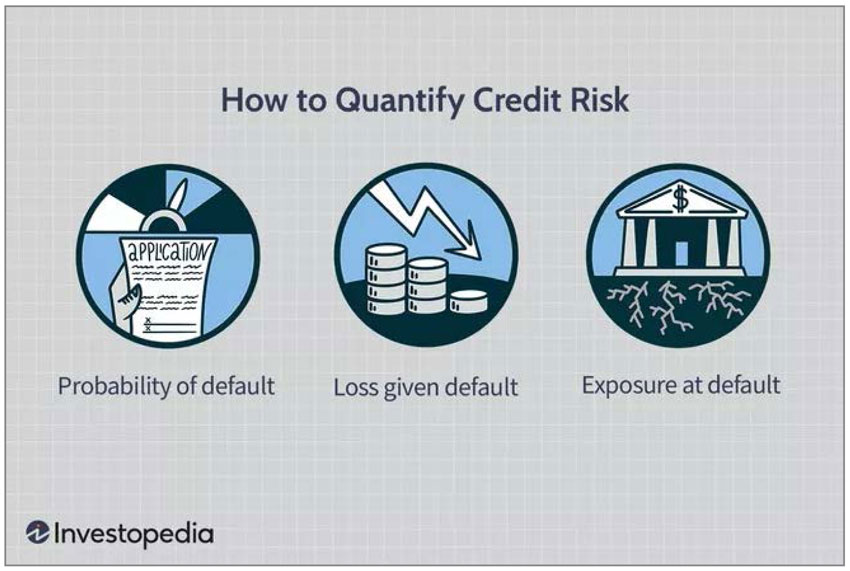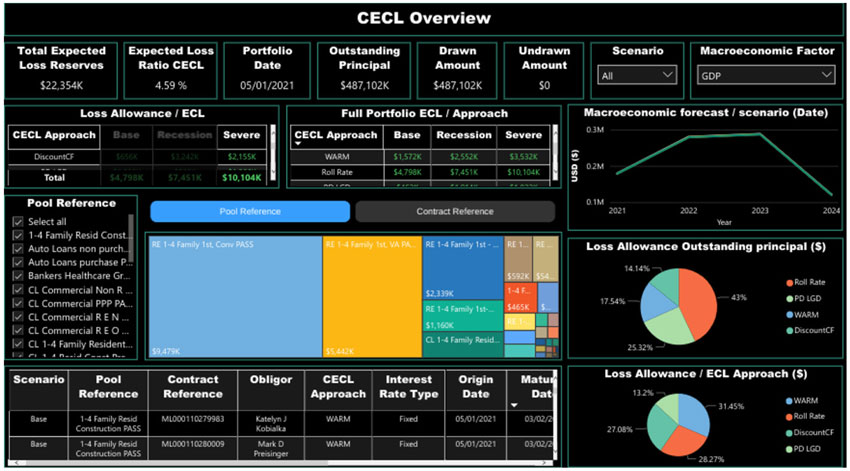CECL AND IFRS 9 ACCOUNTING STANDARDS
The Financial Accounting Standards Board’s (FASB) Current Expected Credit Loss (CECL) model requires financial institutions to estimate lifetime expected credit losses for their assets and hold capital accordingly. The International Accounting Standards Board (IASB), under its International Financial Reporting Standards 9 (IFRS 9), made significant changes to its accounting models for credit impairment. The internationally used and recognized IFRS 9 standard differs from CECL (Used primarily in the US) in a few significant areas. Both these standards are explained below.

Getting familiar with IFRS 9
In accordance with the new standard, which introduces the idea of expected credit loss accounting, banks must estimate the potential loss of assets at the time they are created or purchased. These banks have to then set aside funds to cover that loss. Banks only made provisions for assets under the prior system, IAS 39, at the point of impairment.
There are three phases of impairment as part of IFRS 9:
Phase 1
When no significant deterioration is observed for assets, then they need to have provisions for losses that are predicted over the next 12 months.
Phase 2
When assets undergo significant deterioration, they should have lifetime provisions.
Phase 3
Impaired assets would be highlighted by two factors. They would display a reduction in expected interest payments and also have lifetime provisions.
IFRS 9 aims to align global standards and is part of a broader set of accounting rules. The Current Expected Credit Loss (CECL) standard is the US version of IFRS 9.
Understanding CECL

The Financial Accounting Standards Board (FASB) issued the new accounting standard, the current expected credit losses methodology (CECL). This expected credit loss accounting standard for estimating allowances for credit losses was issued in June 2016. CECL substituted the Allowance for Loan and Lease Losses (ALLL) accounting standard. ALLL focused on actual losses suffered. However, it did not account for potential future financial flows that would be unpaid. The 2007–2008 financial crisis served as a warning about the shortcomings of existing approaches for setting up capital reserves. The CECL standard makes a move to the expected credit loss model. Banks and other financial organizations will have to abandon the previous incurred loss model and will be compelled to create estimates that are forward-looking as a result of this change.
As they prepare for the transition to CECL, financial institutions must also take internal control audits into account. When it came to the techniques and models that institutions could employ to execute CECL, FASB made no absolute restrictions. Within financial institutions, a number of models have gained favor for calculating anticipated credit losses, and some of them are explained below.
- Discounted Cash Flow Analysis (DCF): As part of CECL, there is a change to the Discounted Cash Flow Analysis method with a need to consider at least some risk of loss and the removal of the best estimate notion. This method now involves relevant external factors that show a credit loss that is expected. As a result, new data will have to be sourced. This is especially true for individual assets to be in line with the cash flow expectations.
- Weighted-Average Remaining Maturity (WARM) method: This is a relatively new method. When it comes to implementing CECL, the WARM method is more practical in its approach. For institutions faced with a scarcity of loan-level data, the WARM method is a good option. These financial Institutions are able to use aggregated data from call reports. This is because the WARM methodology uses an average annual charge-off rate.
- Vintage Analysis (VA): Vintage analysis pulls its data from loss curves. Loss curves involve expectations of losses at each point in the life of a financial asset. The primary change to the vintage analysis method as part of CECL is that the allowance will be mirrored by the remaining area under the loss curve and will not be shown as a single point on the loss curve.
- Probability-of-default/Loss Given Default (PD-LGD) method: Institutions that choose the probability-of-default methodology will have to verify the reliability of historical data sets. The cumulative default probabilities and loss given default are built by these data sets. Various industry sources of data can be used to verify the probabilities of default over various economic cycles. This is done to add on to the institution’s own experience.
Implementation of IFRS 9 and its lessons for CECL implementation:
The implementation of IFRS 9 outside the US has been mandatory only since 2018. Still, there are several lessons that can be learned and then implemented with CECL, in the US.
As compared to the IFRS 9 implementation, it is observed that credit impairments are initially higher when CECL is being implemented. The ECL estimates are, therefore higher, and financial institutions may suffer initial stress during CECL implementation. But in later stages of the loan, IFRS 9 does catch up with CECL when it comes to the estimation and maintenance of reserve levels. This leads to increased financial stability during periods of financial stress, thereby creating a resilient financial system.

Also, CECL regulators vary across different states in the US. The differences lie in staging and timing, and IFRS 9 is based on less applicable methods. Over time CECL aims to triangulate the result. This means that the Discount Cashflow (DCF) method and PD-LGD method are likely to be the preferable ones because they triangulate best with loan pricing. We can look at the loan price, and we should be able to compare the DCF and the PD-LGD as they are both based on the Probability of Default (PD). That PD should be reflected on day one of the loan for its spread. As the loan deteriorates in credit value, it should be visible in those two methods. We should be able to track them in a way that is different from other methods, such as Vintage method and Warm method, which are based on historical averages. Therefore, if we think of loan pricing as a function of credit and credit deterioration, then CECL should be reflected best in DCF and PD-LGD methods.
One of the differences between IFRS 9 and CECL is that CECL has multiple approaches. Those approaches are likely to converge. It will not be immediately evident to bank examiners. Ultimately, since PD-oriented methods are preferred in IFRS 9, it is likely that they will be preferred in CECL as well.
The PD should determine the spread on the loan. In theory, we should always make the same risk-adjusted profit. Thus, the reason we will pay more is that, on average, we will default more quicker. The bank recovers the amount because of the higher interest rate that covers the quicker risk of default. Hence, we should be able to work out the PD from the spread on a loan in a way that we should be able to work out the spread of a loan from the default, and the discount cash flow should be locked together of those two things on day 1. As we move forward, if the PD stays the same, then they should stay together. If the PD moves, then we should be able to see the PD, LGD, and DCF move away from the current CECL amount. Therefore, triangulation should exist. If it does not exist, it is because we are using Vintage or WARM method because of the averaging effect. And it does not exist because that can get skewed depending on how we do our loss averages and our forward projection of the economics. DCF and PD-LGD are more in line with the loan pricing.
We are not necessarily checking the accuracy of ECL (Expected Credit Loss), but we are checking if the PD was right in the first place, and that is how we should price the loan so it should all work together. FICO scores change according to experience, and the banks then price loans according to the best available knowledge. If we are pricing a loan against the PD, the capital should also be in line with it. So, we are charging the appropriate spread and holding the appropriate capital. That should be locked together, and the two methods most related to that are DCF and PD/LGD. This is exactly the reason why we need to think about CECL methods. DCF and PD/LGD methods are much more in spirit of why CECL exists, and that is backed up by IFRS 9, which exists for the same reason and has come to the same conclusion.
CECL Express can help…
CECL Express is a turnkey solution that fully satisfies all elements of the new CECL accounting standard. The system provides all non-loan data, including:
- Yield curves and Fed data
- Linked reports on losses from the FFIEC and NCUA
- PD and LGD curves
- Macroeconomic data
Banks and credit unions need to only provide the underlying loan details for the system to provide fully auditable ECL results for multiple calculation methods, including:
- Vintage
- Roll Rate
- Discounted Cashflow
- WARM
- PD/LGD

CECL Express provides more than valid ECL results. The system computes results for all methods and all loan pools, allowing the bank to optimize its CECL configuration and avoid the worst impacts of the new standard.

